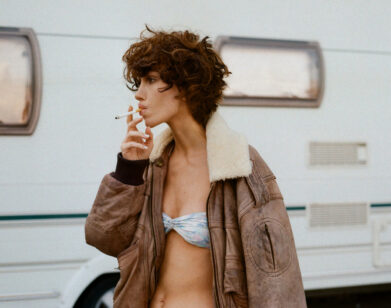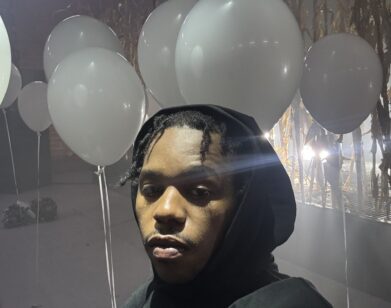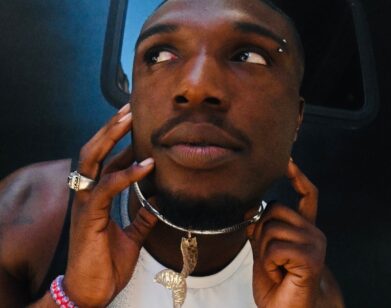Prince, in Private and Public
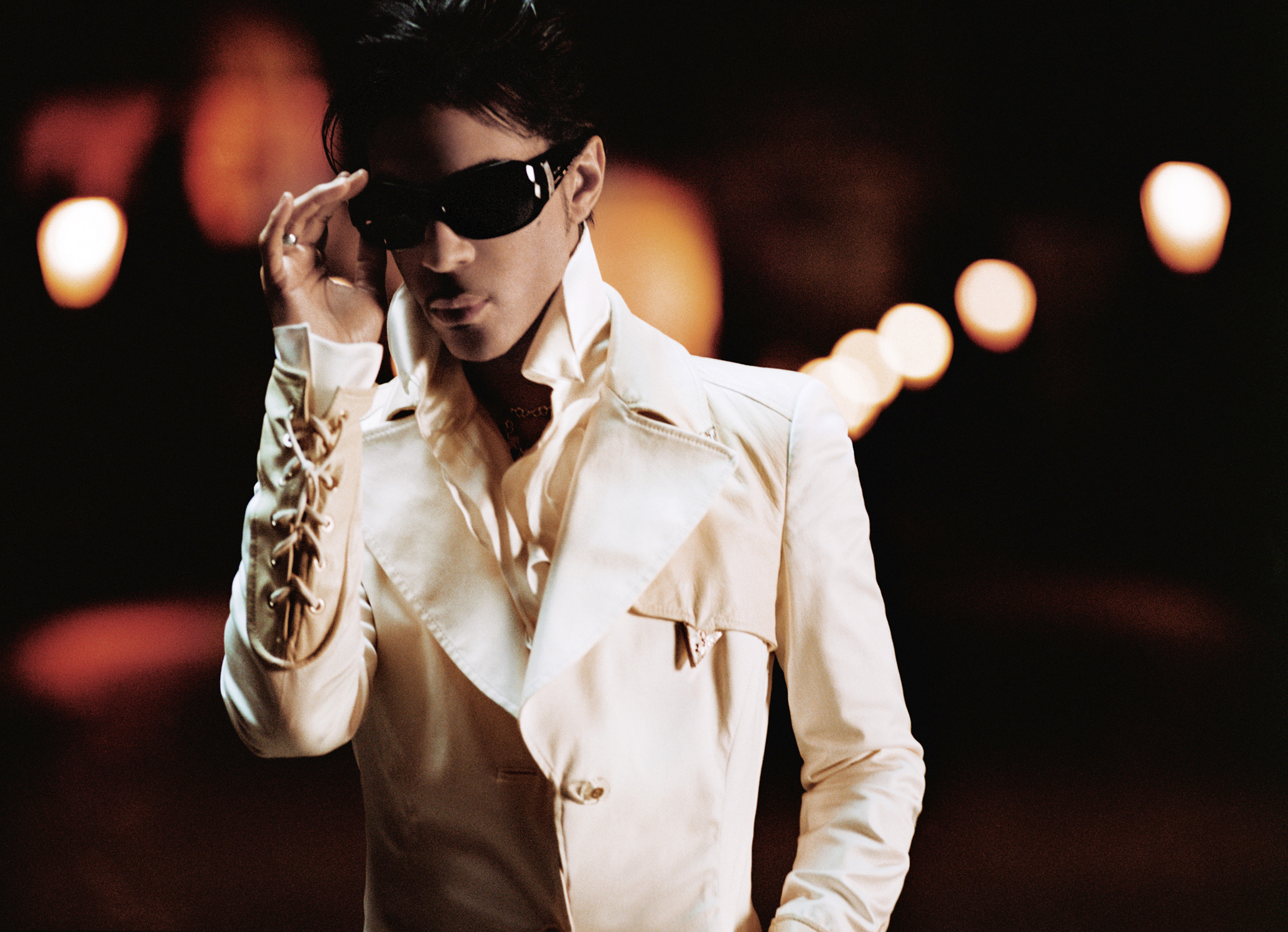
Randee St. Nicholas is no stranger to talent. Trained as a painter, the photographer, designer, and music video director has worked with, well, just about everyone, from Britney Spears to Whitney Houston. But while her subjects have undoubtedly made names of themselves, they always seem the most curious about someone else St. Nicholas has shot—that is, the artist known as Prince. Through their 25-year artistic partnership and friendship, Prince and Randee St. Nicholas produced numerous portrait photographs, two dozen music videos, the full-length film 3 Chains o’ Gold, and the art book 21 Nights, which documented Prince’s three-week stint performing at the O2 music club in London. Looking back on their quarter-decade relationship, Randee St. Nicholas has created a new collection of photographs, My Name is Prince, set to be released in November. Prince reinterpreted genre and recast celebrity—he was androgynous, amorphous, and above all, sexy. To Randee St. Nicholas, he didn’t quite belong amidst the mundanity of this earth. To Randee St. Nicholas, he was an “alien.” Below, the photographer tells us about the private life of the man who made it (purple) rain.
———
CARINA IMBORNONE: Prince’s image is very iconic.
RANDEE ST. NICHOLAS: I remember driving down Sunset Boulevard and seeing a billboard of this androgynous guy with long, dark hair wearing no shirt. His hair was blowing. The picture was such a terrible photograph, but he was so mesmerizing.
IMBORNONE: This was before you ever met him?
ST. NICHOLAS: Yes. The first picture I saw, and I was like, “Who is that guy? He’s got no shirt on and his hair’s blowing. That’s so embarrassing.” Then, of course, he turns out to be the person that’s inspired me the most. I never talk about my work, but it’s easy to talk about Prince.
IMBORNONE: How did you get involved with taking photos of celebrities?
ST. NICHOLAS: I dropped out of art school after about a year because I married a rock musician. A band called The Knack needed some pictures taken. I borrowed a camera and took their picture, and it became their album cover, and the album became the number one selling record. In the first year, I tripled the income that I had made as a painter. I was twenty, maybe. There weren’t very many girl photographers, so I overcompensated by being a technical freak.
IMBORNONE: What was your first camera?
ST. NICHOLAS: I had a Nikon f2, and I had a Hasselblad. I still have them. I loved photography because, first of all, I was shy. I found out that most of the subjects I were shooting were also shy to have their picture taken. It was the perfect therapy for all of us.
IMBORNONE: How did Prince collaborate with you?
ST. NICHOLAS: He forced you to work the same way he worked: flying by the seat of your pants. You had to just trust your instincts. This is why Prince was so prolific. He wrote music every day and recorded it. He didn’t belabor it. Do you know of any other artist that can fly to a city, get off the plane, say “let’s do a show at this place tonight,” not publicize it, make it happen, and have it sell out? Because that’s what he did, constantly. He was a difficult character, let me tell you. I don’t care how difficult any of the celebrities I’ve shot are, they could never compare to having to figure out what to do with Prince with no notice, in a city you’ve never shot in before, and you have no time to figure it out. It better be brilliant, otherwise, he’s over you.
IMBORNONE: But his spontaneity invited you in.
ST. NICHOLAS: One time, he called me at nine in the morning. You know if he calls you at nine in the morning, he’s been up all night, because he’s not really an early riser. He said, “I just thought of this. Imagine if you and I were taller. The world wouldn’t be able to handle us, at all.” I go, “Is that why you called me?” He goes, “Yeah, I was just thinking about that.” The public doesn’t know very much about Prince’s private world.
IMBORNONE: There was a sense of generosity of spirit about him.
ST. NICHOLAS: He was very generous. But he would never tell you about it, unless you were there witnessing it. When Spike Lee was finishing Malcolm X, he ran out of money. Prince said, “Don’t worry. I’ll fund the rest of it.” No one knows that. One night, about four in the morning, after I shot the book 21 Nights with him, he called me and said, “I did some research. The photographer who shot the Muhammad Ali book got a half a million dollars for the book. But this whole book is you, so I’m going to give you one million dollars. Are you cool with that?” I never asked him for a cent.
IMBORNONE: Wow. Do you think he trusted women more than men?
NICHOLAS: I think that the men he trusted, he trusted. I think what he saw in women was that we come from our hearts. He would be very happy that there’s a woman writer doing this interview right now. He had women in his band. He had women photographers. He had women directors. He had women handling his money.
IMBORNONE: Can you tell me about the photo you took where he has the word “slave” written on his face?
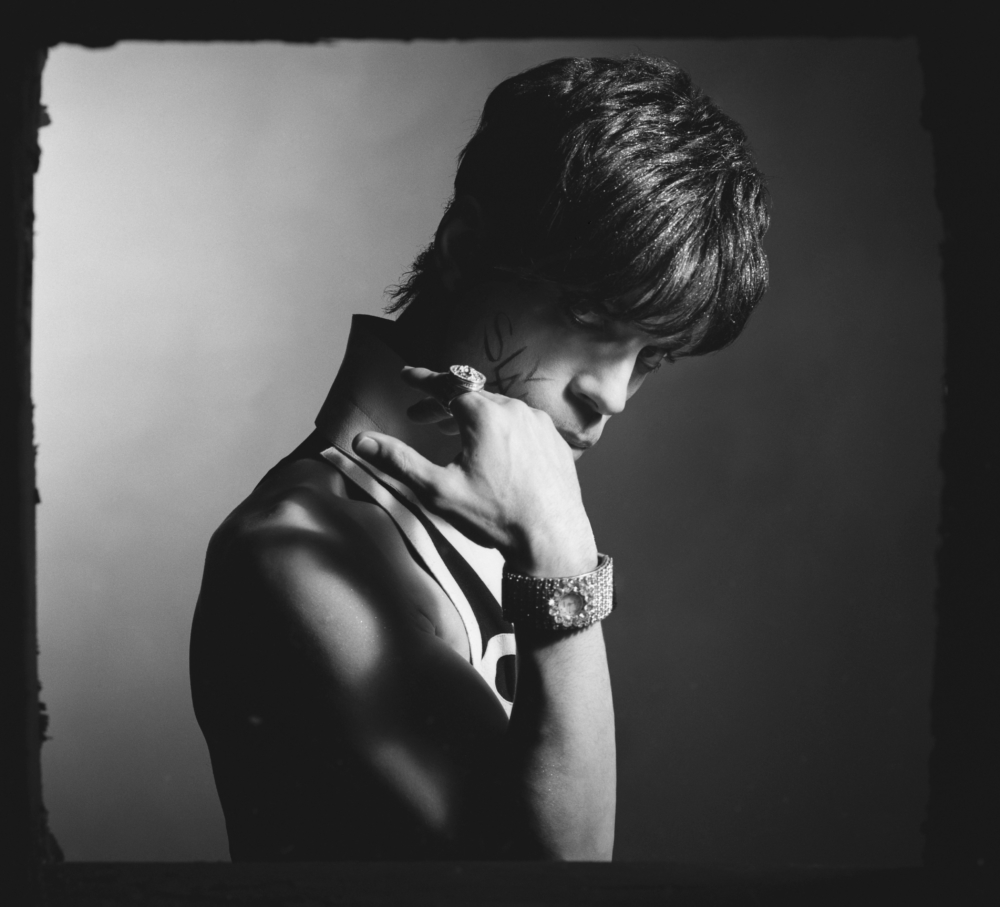
ST. NICHOLAS: I shot that photograph in New York. He had “slave” written on his face from 1992 to 1996, I think. He loved to have his picture taken, which was so interesting, because most people don’t.
IMBORNONE: I’m interested in the piercing sort of gaze that Prince is giving. It’s not apparent at first, but once you notice it, it’s very powerful.
ST. NICHOLAS: He was shy, and he was quietly powerful. There’s only a few people I’ve ever met that had a charisma that was so big that you just felt their presence, and they were shy. One of them was Kim Basinger, and the other one is Willie Nelson. This look on his face, I’ve seen many times. Many times. We see him, and more importantly, he sees us.
IMBORNONE: How about the photo of him in red?
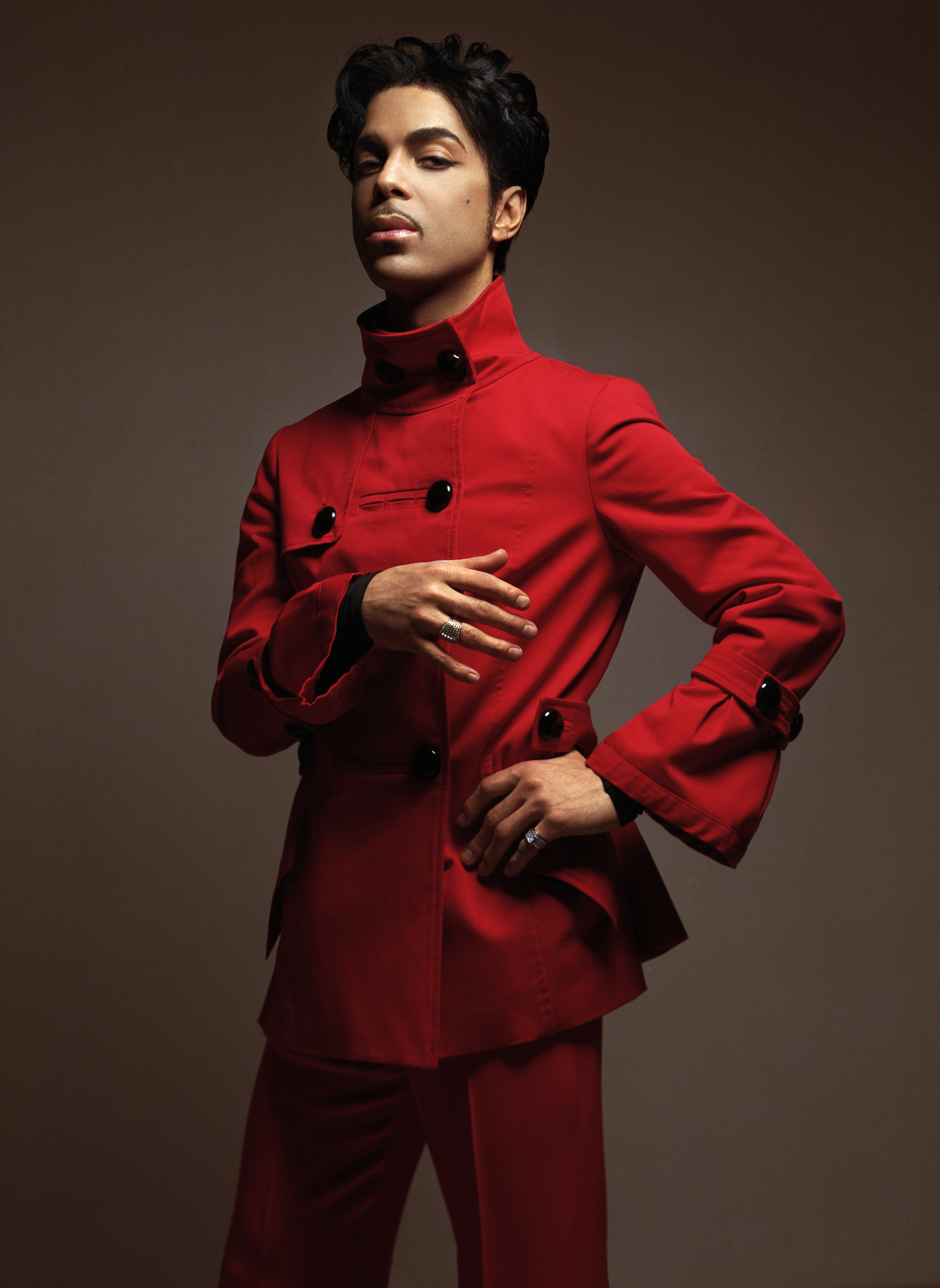
ST. NICHOLAS: I hadn’t seen Prince for a couple of years at this point. It’s the only time, in all the years I knew him, that I didn’t see him consistently. I was directing these commercials for Martha Stewart, and I couldn’t make it happen that quickly that he needed me to. I was so happy to see him. He was so happy to see me. This picture was shot at two in the morning. It was him coming back home. I have a big blow up of this picture in my studio, on my stairwell. It’s sort of like, you know those paintings of Jesus, where you walk by and the eyes seem to follow you? It’s inviting, but don’t come any closer.
IMBORNONE: There’s something sensual about it.
ST. NICHOLAS: It’s kind of like the Prince Mona Lisa.
IMBORNONE: Yes.
ST. NICHOLAS: Prince was completely authentic. He was Prince 24/7. The music, I think, was a way for him to communicate. He didn’t really do interviews. He didn’t talk about his process. He just did it. To know him is to know you’ll never really know him. I told him once, “I think you’re an alien.”
IMBORNONE: There’s an ethereal glow to him in all the photos, but particularly when he was performing.
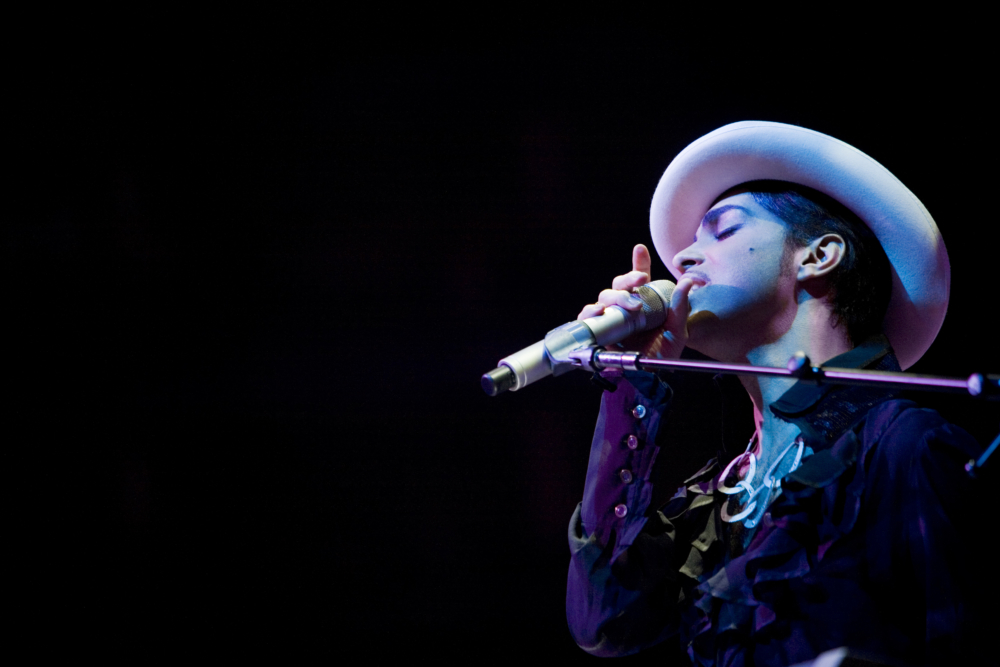
ST. NICHOLAS: This photograph was shot at the O2 in London, at one of the shows in 2007. I saw every show, because I shot for 21 Nights. I don’t shoot live, but he wanted me to shoot live. So, when I showed him these, he goes, “I don’t like these.” I go, “What do you mean? Look how amazing you look!” He goes, “No, because they look like you staged them. Look, the lighting looks perfect, the composition looks perfect. It doesn’t look live.” I said, “Thank you.” He just would roll his eyes at me like, yeah, I just told you I didn’t like it.
IMBORNONE: He had a good sense of humor.
ST. NICHOLAS: He would surround himself with people who could have fun, who could be spontaneous, who could hang without any safety net and just kind of live in Prince’s world, which was no food, no sleeping, working around the clock.
IMBORNONE: No food? Did he not eat?
ST. NICHOLAS: Not much. Sometimes we’d have hot fudge sundaes, or chocolate chip cookies at four or five in the morning.
IMBORNONE: He was an alien.
ST. NICHOLAS: The toughest thing is, part of me wants the whole world to see the things about him that make him absolutely, irresistibly, adoring. The other part of me wants to respectfully make sure I don’t say too much, because he was a private guy. When we were having meetings with the original book, 21 Nights, we showed the book to a lot of publishers. The book publishing world, as you know, is filled with a lot of kind of snobby intellectuals. I told Prince, “I wish you could have been a fly on the wall.” At these meetings you would meet the most conservative people, and they would tell stories about losing their virginity to “Little Red Corvette.” They were closet Prince fans.
IMBORNONE: He could be peoples’ secret artist that they looked up to, or admired.
ST. NICHOLAS: You can say it’s just about the music, but actually, the man is the music. This guy, this person, this alien, this artist lived his life exactly as he wanted. He never played any note he didn’t want to play. He lived his life exactly as he wanted to. It doesn’t mean that who he was didn’t change from scenario to scenario, because he also had a personal life. Every time there was a woman in his life, she would show up at my studio to be photographed. He had incredible taste in women. He was just funny, and smart, and interesting. He was just so much. All the girls that I know well, that have been in his life, stayed in his life.
IMBORNONE: He was a curator of who he let in.
ST. NICHOLAS: If you could hang, you were in. If you couldn’t, then you couldn’t. I didn’t ever think about any of these things I’m saying to you now until I laid out 25 years of photographs of him. It was like a cathartic journey through 25 years of my creative life. The book starts with the very first photo shoot I did with him, and ends with the very last photo shoot I did with him.
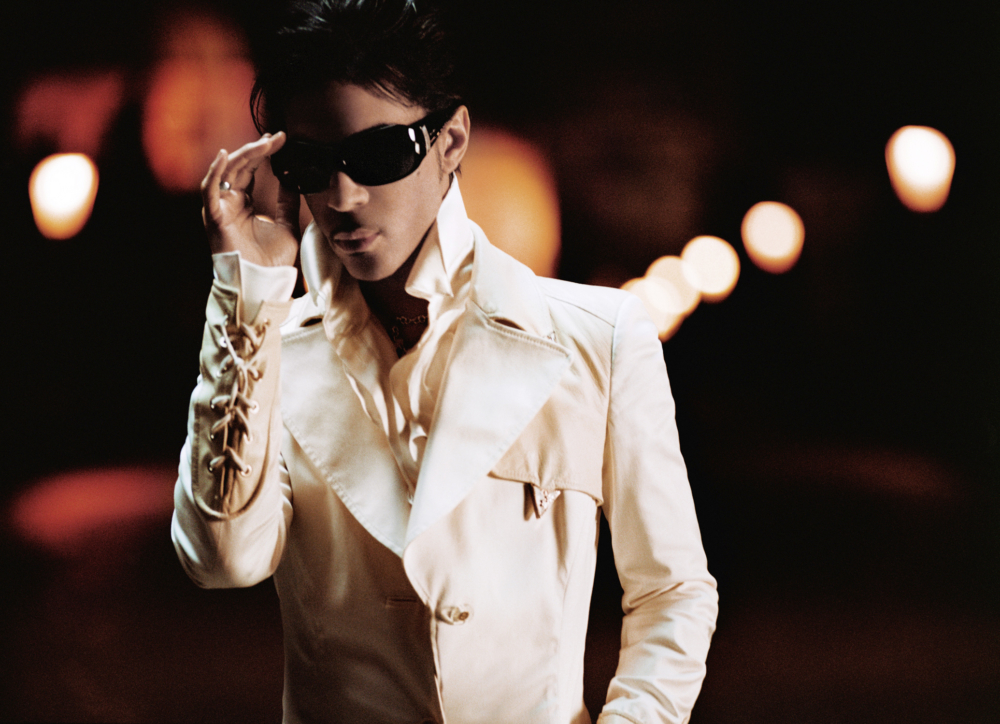
ST. NICHOLAS: That photograph [above] was shot on the Saint Charles Bridge in Prague.
IMBORNONE: It’s a beautiful bridge.
ST. NICHOLAS: There’s a picture in the book of him where he is tiny, and the bridge is looming over him. He was doing a music video. It’s probably three in the morning. It was freezing. We had a kerosene heater in one pop up tent on the bridge.
IMBORNONE: Every shoot seems like it was done at 2 AM.
ST. NICHOLAS: Even if we started during the day, we were shooting all night.
IMBORNONE: Tell me about the picture with him and the guitar.
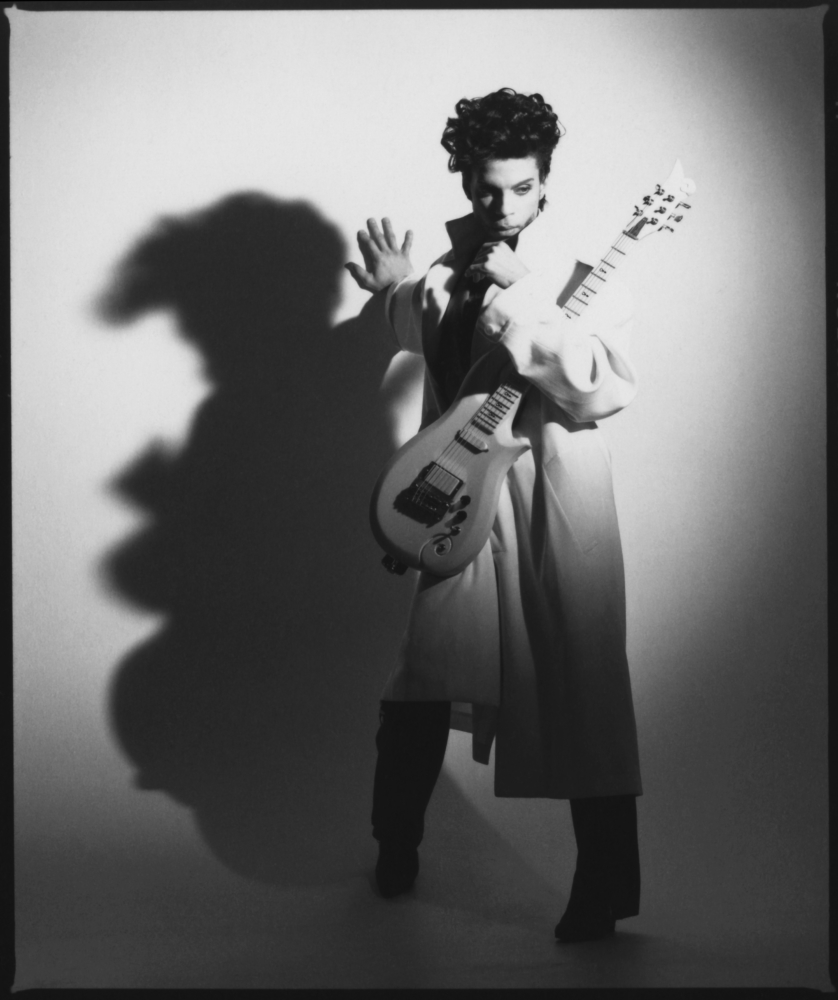
ST. NICHOLAS: First of all, I’ve never seen him without the most perfect eyeliner ever. I don’t care what time of day or night it was. I did a whole series of those pictures with his shadows, because I thought his hair was so amazing. You never knew what hair was going to show up. He inspired and repelled fashion at the same time. The whole lace and lace eye patch thing. Bringing back the Amadeus shirt with cuffs. It was somewhere between Vogue and Frederick’s of Hollywood. He was impeccably clean, but then there would be this element of sexual fantasy and a little bit of trashiness mixed in.
This is not a guy who would hang around in front of the camera for very long. I would shoot a few frames, and then he would go out to a club with five girls, and come back in two hours and let me shoot a few more frames of another set up. It took probably about six or seven minutes to do each frame of this triple exposure—so no room for error. This is not a digital technique. It just tells you not only how focused he is, but how he’s always kind of been in the right place at the right time, musically and spiritually. This is a very evolved soul here.
IMBORNONE: Exactly.
ST. NICHOLAS: To be a photographer, to have a subject like this, it probably only happens once in a lifetime. He lived his life like no other being that I know, doing exactly what he wanted. After all the years of him being an icon, his music is still relevant. I hear Prince influences all the time.

